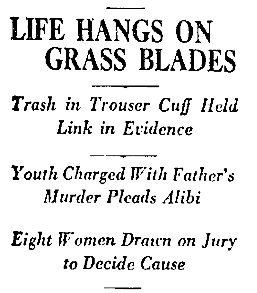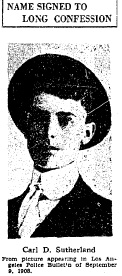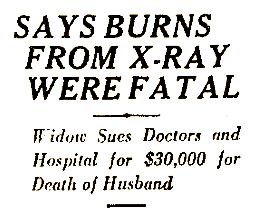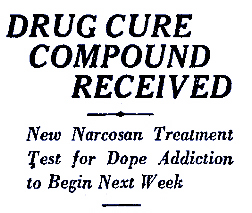Van Nuys, CA
Today, Dr. Burt Fullmer was savagely attacked, after being lured to a cabin in the Princess Auto Camp near Van Nuys. When Fullmer entered the cabin, he was bludgeoned in the head by Dr. J.H. Balzer, while Mary Wade stuck him in the arm with a hypodermic needle full of morphine. Fullmer fought them off, and the three rolled out the cabin door where they attracted the notice of neighboring campers.
Responding officers discovered a shovel, rope, and canvas in the cabin, and charged Balzer and Wade with suspicion of assault with a deadly weapon and assault to commit murder.
And you’ll never guess the motive for the attack. No, seriously. You will never guess it.
The attack on Fullmer was the latest in a series of power plays between warring factions of a splinter sect of the Seventh Day Adventist Church.
Fullmer had recently been excommunicated from the Seventh Day Adventist Church, along with many others, for following the teachings of Mrs. Margaret Rowan, a self-proclaimed prophet who, the Times says, “rather startled the world by predicting its sudden finish two years ago.”
The excommunicated started the Seventh Day Adventist Reformed Church. However, the fledgling church ran into trouble in a hurry.
As President and Treasurer of the church, Fullmer found himself at odds with Rowan. He said, “I began to suspect that maybe things weren’t just right after her prediction failed to come true… I began investigating Mrs. Rowan’s activities and the things that developed caused a split in our ranks.” Fullmer claimed he had dirt on Rowan, and her followers intended for it never to come out. “They were planning to kill me. Why do you suppose they had that pick, shovel, and canvas for if it wasn’t to bury me?”
In turn, Balzer claimed that Fullmer had been trying to wrest control of the group and had embezzled the church’s funds. Balzer said, “We were driven to the limits of desperation by this man. His persecution has been terrible.”
Blessed with foresight, Mrs. Rowan skipped town right around this time, prompting a statewide search as police sought her in connection with the beating. A week later, she surrendered to police, and stood trial with Wade and Balzer. The three were found guilty, and sentenced to 1 to 10 at San Quentin.









 The widow Alice Hanmore has a bone to pick with
The widow Alice Hanmore has a bone to pick with 
 Those junkies and hopheads that once provided the occasional bruise on this perfect ripe plum that is Los Angeles—shall be no more! Though alcoholism was
Those junkies and hopheads that once provided the occasional bruise on this perfect ripe plum that is Los Angeles—shall be no more! Though alcoholism was